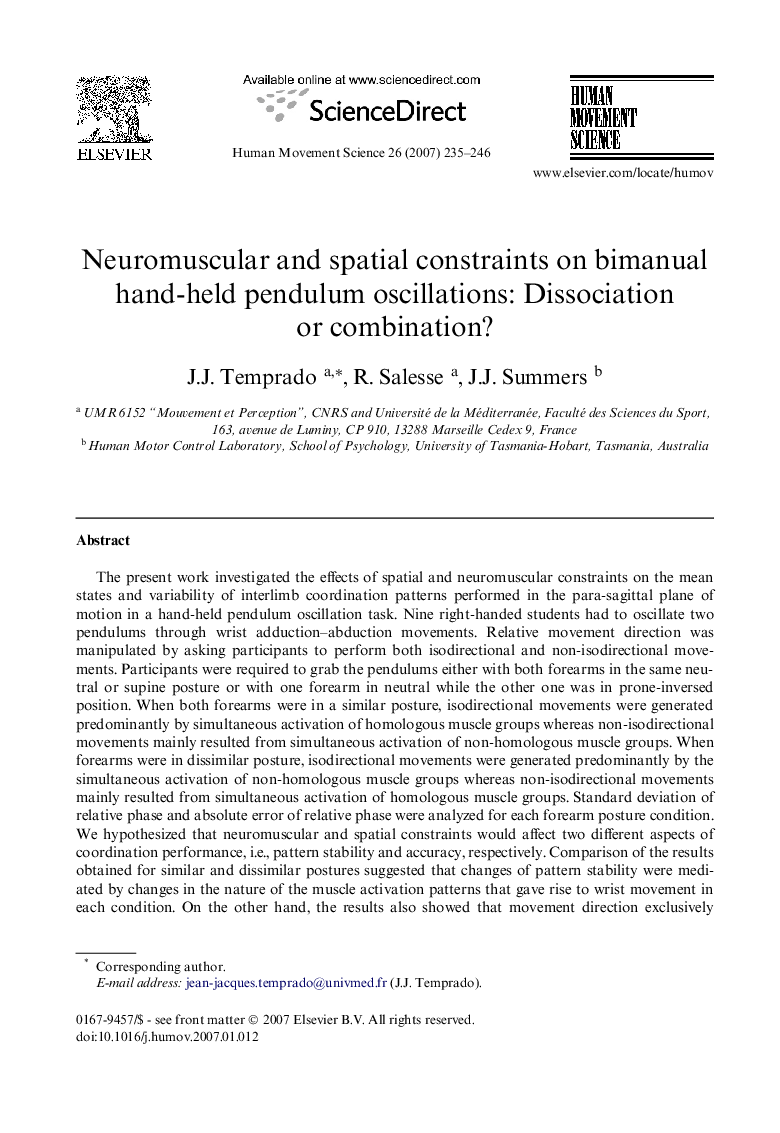| Article ID | Journal | Published Year | Pages | File Type |
|---|---|---|---|---|
| 928939 | Human Movement Science | 2007 | 12 Pages |
The present work investigated the effects of spatial and neuromuscular constraints on the mean states and variability of interlimb coordination patterns performed in the para-sagittal plane of motion in a hand-held pendulum oscillation task. Nine right-handed students had to oscillate two pendulums through wrist adduction–abduction movements. Relative movement direction was manipulated by asking participants to perform both isodirectional and non-isodirectional movements. Participants were required to grab the pendulums either with both forearms in the same neutral or supine posture or with one forearm in neutral while the other one was in prone-inversed position. When both forearms were in a similar posture, isodirectional movements were generated predominantly by simultaneous activation of homologous muscle groups whereas non-isodirectional movements mainly resulted from simultaneous activation of non-homologous muscle groups. When forearms were in dissimilar posture, isodirectional movements were generated predominantly by the simultaneous activation of non-homologous muscle groups whereas non-isodirectional movements mainly resulted from simultaneous activation of homologous muscle groups. Standard deviation of relative phase and absolute error of relative phase were analyzed for each forearm posture condition. We hypothesized that neuromuscular and spatial constraints would affect two different aspects of coordination performance, i.e., pattern stability and accuracy, respectively. Comparison of the results obtained for similar and dissimilar postures suggested that changes of pattern stability were mediated by changes in the nature of the muscle activation patterns that gave rise to wrist movement in each condition. On the other hand, the results also showed that movement direction exclusively affected phase shift. The findings are consistent with the conclusion of Park et al. [Park, H., Collins, D. R., & Turvey, M. T. (2001). Dissociation of muscular and spatial constraints on patterns of interlimb coordination. Journal of Experimental Psychology: Human Perception and Performance, 27, 32–47.] that neuromuscular constraints affect variability of relative phase (attractor strength) and spatial constraints affect the shift of relative phase (attractor location).
